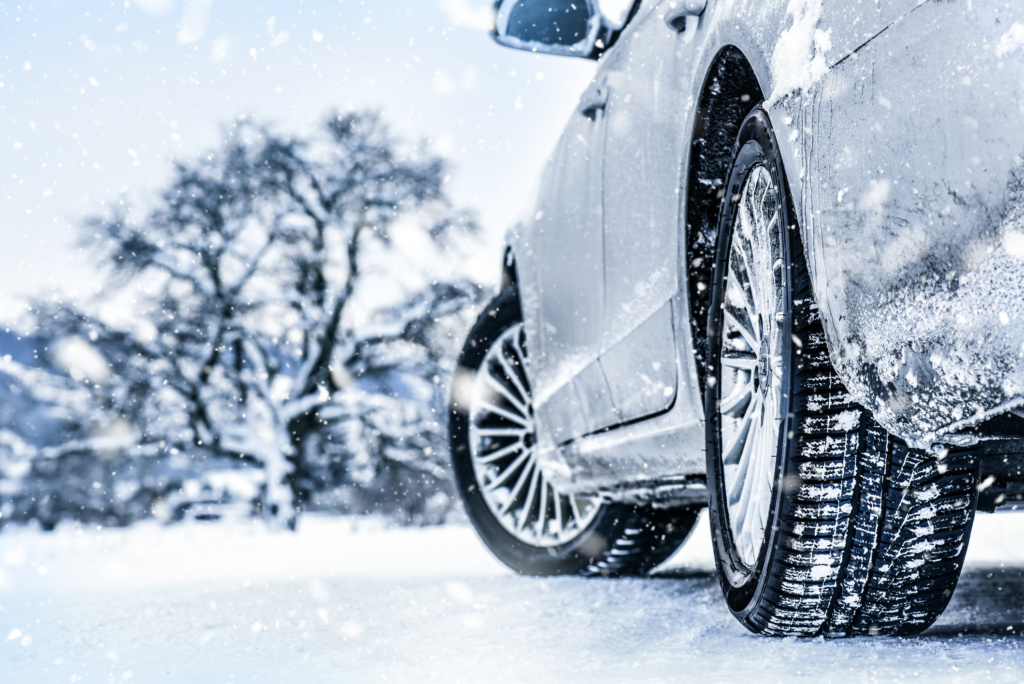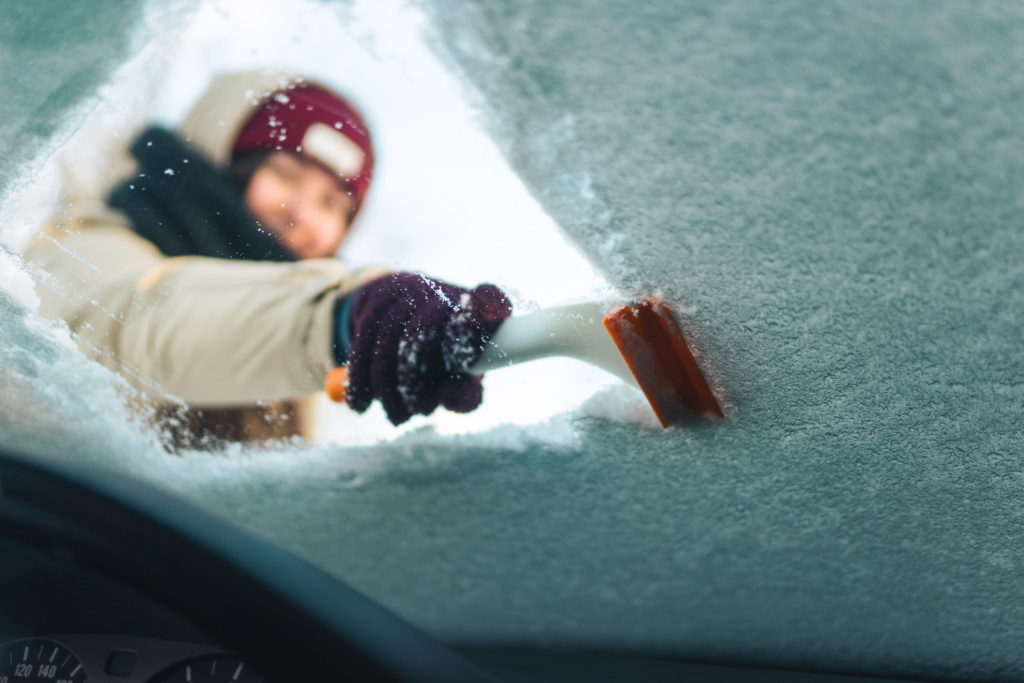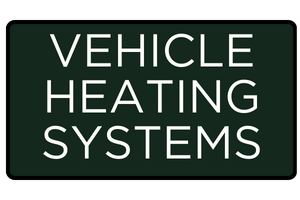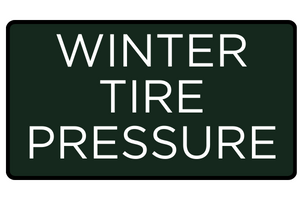
As winter approaches, we understand the challenges that colder weather can pose to your vehicles. To ensure that you and your vehicle are well-prepared for the winter season, we have compiled a set of valuable tips to help safeguard your driving experience. From checking tire conditions to ensuring proper antifreeze levels, our comprehensive guide aims to equip you with the knowledge needed to keep your vehicle running smoothly during challenging weather conditions. Your safety is our top priority, and we believe that these tips will not only enhance your driving confidence but also contribute to the longevity and performance of your vehicle. Check out our Winter Weather Preparedness page for even more information.
Why Is My Car Heater Blowing Cold Air?
It’s easy to take modern conveniences for granted. An electric coffee pot brewing while you step out of the room. A garage door that opens with the click of a button. Heated air pumping out of the vents into your vehicle on a cold winter’s morning. But what would you do if those conveniences just stop working? Specifically, how do you fix a car heater that is blowing cold air?
Before you panic, let’s double check the obvious. Is your vehicle warmed up enough from a cold start to push out heated air? For your car heater to function properly, the temperature gauge on your dash (which measures the heat around your engine) should read in the middle, not in the blue cold zone or the red hot zone. If you’re too impatient to wait for your vehicle to run long enough to push out hot air before hitting the road, our experts suggest installing a remote starter to give yourself some extra time. Next, let’s check the settings of your internal cabin temperature controls. Has your automatic climate control system set itself to defrost only for the first few minutes? Are the vents on your dashboard open and angled properly to disperse a strong current of air?
If those quick checks were the problem, we promise, we won’t tell anyone. However, if you still haven’t found the answer to ‘why is my heater blowing cold air into my car,’ the next step is to lift the hood to remove any possible obstructions, like leaves and debris, that might be blocking the cold air intake system. Airflow backup could also be caused by a dirty, clogged cabin air filter. A high quality cabin filter keeps the air inside your vehicle clean, while also trapping dust and dirt before it enters your heater core and evaporator. Locate your air filter, and remove it for inspection. If the pleats are clogged with debris, it’s due for a change. As part of a maintenance routine, replace your cabin air filter every 20,000 miles or 12 months, whichever comes first.
Another easy solution to solving a car heater problem is topping off the coolant level. If the coolant level is low, not only will heat not reach your heater core, but the built-up heat not being transmitted properly by coolant could damage your engine. If your coolant level is low, top it off. Be aware, it is critical that you also check for signs of damaged hoses or loose connections that could be leaking.
Another common problem that causes a car heater to pump out cold air is if the control valves in the thermostat are stuck open or closed. A thermostat is a temperature regulator in the form of a valve, situated between the engine coolant outlet and the radiator inlet. If possible, fix the stuck valves, or follow these tips for a full thermostat replacement.

Other Issues: And They Might Cost You
Any quick fix for no heat in a car was mentioned above. If you are still experiencing car heating problems, it is likely a more costly and time-consuming solution. Let’s start with the fan, often called the blower. You should hear the fan running if your heater is turned on, especially full blast. It is possible debris has been lodged or wrapped around the fan, which would cause a tapping noise or popping sound.
If the airflow is weak coming out of your HVAC system, then it is likely a blown blower motor. When you turn on your interior heat, a fan behind the core starts up and blows heat into the passenger compartment. If there is no air current, the solution could be as simple as replacing a fuse or as complicated as replacing the fan itself.
If your heater is blowing cold air, the fan motor might be working, but the water pump, actuator or heater core could be failing. A car heater not working could be due to the vital role the water pump performs. The water pump is typically driven by the accessory drive belt, serpentine belt or timing belt. A worn-out belt can prevent your water pump from operating at peak efficiency. A slow leak from your water pump will cause residue to build up around the pump. Look for coolant trails leading down from the pump or a gunky deposit around the outside.
Still car heater troubleshooting? Actuators are critical to controlling heat, the A/C and even defrost. Knocking, clicking and fluctuating air flow could point to a bad actuator, or two. Cold air output could be an issue if either of the hoses connected to your heater core have become loose. One hose is tasked with transporting hot coolant from the water pump to the heater core. The second hose returns the coolant to the top of the engine. Worst case scenario, if the area inside your vehicle, underneath the dash, is damp from a continuous leak, it is highly likely your heater core needs replaced.
Most drivers are not equipped to fix a car heater blowing cold air. Just to diagnose the problem can require a jack, jack stand and many, many hand tools. The solution, even if simple, could involve specialty hoses, connections and clamps. To replace an entire heater core entails removing several components to get behind the firewall, or even removing the entire dash inside your cabin. Newer model vehicles, packed with sensitive electronics, make things even more challenging. When in doubt, take your vehicle to a local AAA Approved Auto Repair Shop near you.
Are Overinflated Tires Bad For Winter?
Are overinflated tires bad for winter? While your tires may need to be reflated more frequently due to colder temperatures, that doesn’t mean they should be overinflated. Here’s what you need to know about overinflated tires and why keeping tabs on tire inflation is especially important during the winter months.
Cold Weather Changes Tire Pressure
Your tire pressure was likely fine all summer long and even into the fall, but now that winter is here that pesky tire pressure light might be blinking to life. What’s going on to cause this? Because molecules become excited in the heat and slow down as the temperature drops, most things expand when they’re hot and contract when they’re cold. This includes the air in your tires. When it gets cold enough, that air contracting lowers the pressure in your tires, leaving you with an underfilled tire that you may not notice.
Having low tire pressure means you need to add air to your tires to avoid handling issues, premature wear, poor gas mileage and more. It doesn’t mean you should add air beyond the manufacturer’s recommendations, however.
Overinflated Tires Can Lead To Tire Damage
Overinflated tires have their own set of problems. Overinflating your tires can cause a bulge in the center of the tread that leads to premature and uneven wear. It can also make them more susceptible to damage from potholes or curbs. If your tires are overinflated, you’ll likely end up needing to replace them more often, and new tires aren’t cheap.

What About Traction?
While tires can be quite large, only a small portion of each tire is touching the road at any given moment. This point is called the contact patch, and it’s what gives your tires traction so it can go where you want it to go when you turn the wheel. The tread surface of an overinflated tire bows out creating a smaller contact patch, which reduces traction. A tire pressure gauge is good to have on hand so you can check your tire pressure if you’re in doubt.
Overinflated Tires In Winter
While overinflating a tire is never good, it’s especially dangerous during the winter months. The snow, ice, salt and sand that gather on the normally clear roads during the winter can reduce grip, which means you’ll need to do whatever you can to get every bit of traction. Because an overinflated tire already has reduced traction due to its smaller contact patch, the likelihood of uneven or excessive tread wear increases significantly in the winter.
You may need to put more air in your tires when temperatures drop, but don’t get carried away. Inflate your tires to the manufacturer’s specifications to ensure good wear, proper traction and optimal tire safety.
Trust one of our AAA Approved Auto Repair facilities for routine maintenance and repairs. Need new tires? Check out the savings AAA members receive with Discount Tire.
Winter Windshield Protection Tips & Tricks
Winter presents numerous challenges to your car, especially for the windshield. Wipers that are frozen in place, thick ice covering the glass and a heater that just can’t seem to defrost the windshield are among the problems you may encounter over the next few months. Beyond using an ice scraper, here’s how to provide proper windshield protection all winter long.
Before you panic, let’s double check the obvious. Is your vehicle warmed up enough from a cold start to push out heated air? For your car heater to function properly, the temperature gauge on your dash (which measures the heat around your engine) should read in the middle, not in the blue cold zone or the red hot zone. If you’re too impatient to wait for your vehicle to run long enough to push out hot air before hitting the road, our experts suggest installing a remote starter to give yourself some extra time. Next, let’s check the settings of your internal cabin temperature controls. Has your automatic climate control system set itself to defrost only for the first few minutes? Are the vents on your dashboard open and angled properly to disperse a strong current of air?
Choose Your Windshield Washer Fluid
Indeed, washer fluid containing 38 percent methanol is certified not to freeze to temperatures to -35C (-31F). Fluids containing 50 percent methanol won’t freeze until temperatures fall to -50C (-58F). Thus, a winter blend will offer superior protection by keeping your windshield clear when you utilize it.
Invest In Good Wiper Blades
How often should you change your wiper blades? Certainly, as often as needed, but typically twice per year. Consider winter wiper blades, which are designed to resist harsh conditions. Such blades encase the metal framework in a metal boot, engineered to keep snow and ice from clogging the wiper assembly. Specifically, higher quality winter wipers include heavy-duty frames and stiffer blades, crafted to remove heavy snow and help cut through ice

Consider Your Defroster
Inspect your defroster to ensure it’s working properly before winter sets in. You need to consider a number of problems that could be causing a malfunction, including a stuck knob, a blown fuse, frayed wires, a broken harness connector, not enough anti-freeze or a malfunctioning heater core. Find the problem and you’ll be adequately positioned to battle winter’s worst.
Avoid Other Problems
Sheltering your vehicle in a garage or underneath a carport will protect it from the elements. If neither option is possible, keep your blades in an erect position when parked to prevent freezing to the windshield. You can also cover your windshield with floor mats or bath mats the night before a significant freeze or snowfall.
Moreover, if you have remote access to the car by way of your smartphone, activate the heating system 10 minutes before you enter and you may avoid using an ice scraper altogether. If your vehicle needs a check-up, trust one of our AAA Approved Auto Repair facilities for routine maintenance and repairs.
Will Your Battery Survive The Winter?
The cooling temperatures of of the season are a welcome relief from this year’s long hot summer. As the country enjoys digging out scarves and sipping pumpkin spice lattes, we cannot forget that autumn means one very important thing… winter is coming! Crisp mornings will soon give way to frigid, bitter cold; the kind of weather that quickly kills a car battery. There is nothing worse than getting stranded out in the cold, so as the leaves turn gold, make sure you prepare your battery to survive the chilly days ahead.
Get Your Battery Tested
Park In The Garage Or Away From Wind
Pause Before Cranking Up The Heat
Keep Your Battery Clean

Did you know a AAA Battery Technician will come to your location (at home, work, hotel, etc.) to test your battery, free of charge? Schedule your courtesy battery inspection to make sure Jack Frost doesn’t leave you stuck out in the cold.









